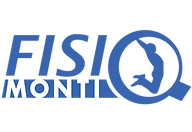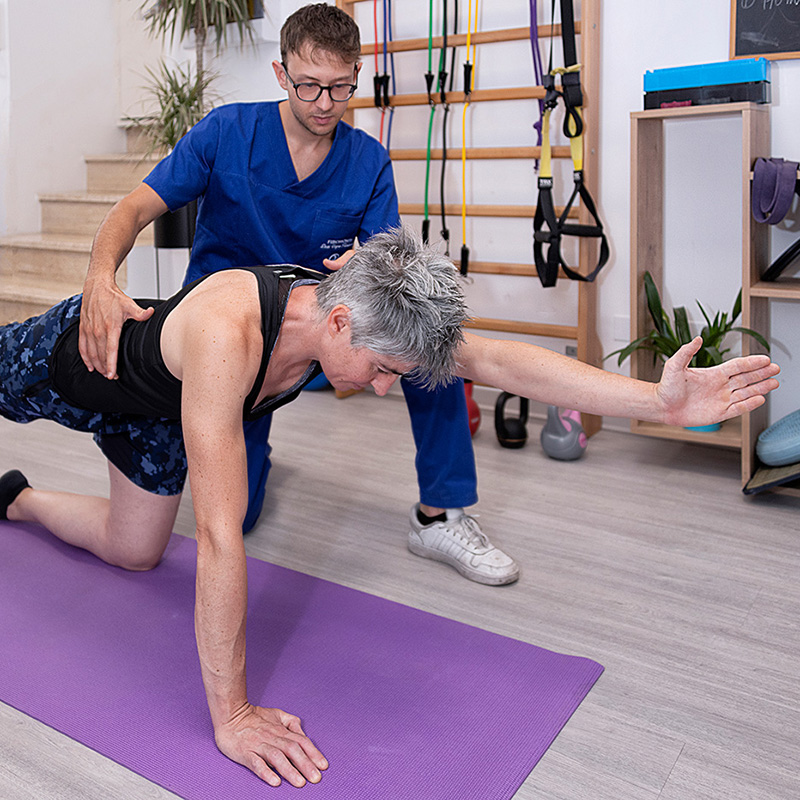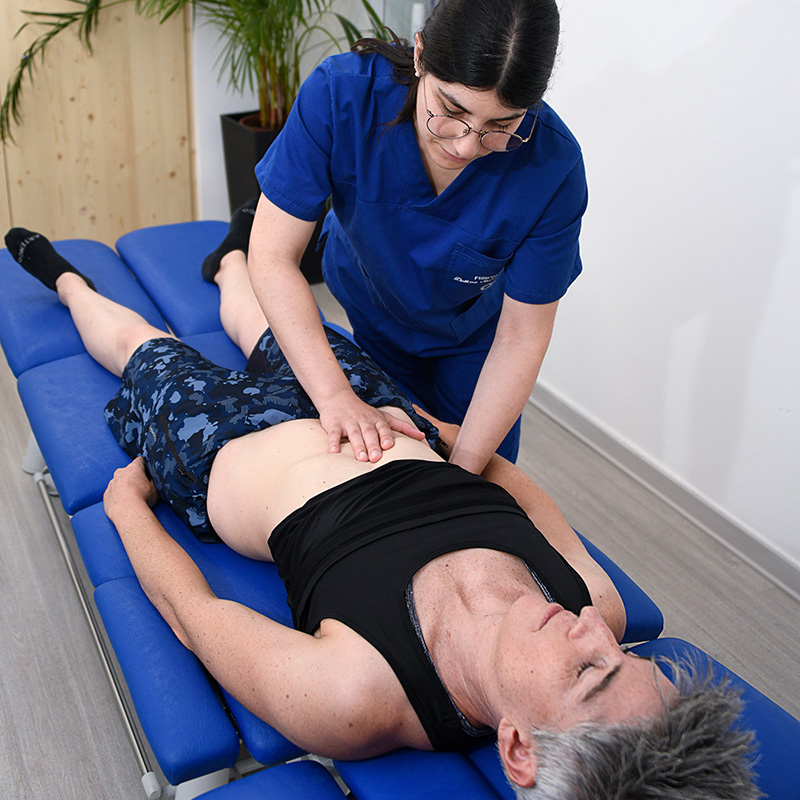FUNCTIONAL RE-EDUCATION – REHABILITATION
FUNCTIONAL RE-EDUCATION – REHABILITATION FUNCTIONAL RE-EDUCATION – REHABILITATION The purpose of this technique is to evaluate and treat movement dysfunctions by treating the musculoskeletal system with manual techniques and specific therapeutic exercises. Functional rehabilitation focuses on the stability of the spine, so that it can maintain functional stabilization during body movements. POST-SURGICAL RE-EDUCATION – REHABILITATION Post-surgical rehabilitation includes all the tools that the physiotherapist uses to achieve the maximum recovery of the patient following surgery. In this type of rehabilitation, we use: Manual techniques: massage therapy, joint mobilizations, myofascial release, etc. Physical means: laser therapy, tecar therapy, TENS, ultrasound, electrical stimulation, etc. Therapeutic exercise: called “passive” when performed by the therapist or special devices/tools, “assisted active” when movement is assisted and controlled directly by the physiotherapist, “active” when the movement is performed solely by the patient. NEUROMOTOR RE-EDUCATION – REHABILITATION Neurological Rehabilitation is a branch of Rehabilitation that deals with the functional recovery of patients with diseases of the Nervous System. Neurorehabilitation, therefore, in addition to recovering the functional damage that has occurred at the level of the Nervous System, aims to provide the most suitable strategies to allow the patient to make the best use of their residual functional abilities. POSTURAL RE-EDUCATION Postural re-education aims to re-educate the body to maintain a more ergonomic, healthier posture, and to reduce the risk factors for the musculoskeletal system of the body. Postural Gymnastics addresses all dysmorphisms of the musculoskeletal system, such as: Scoliosis Hyperkyphosis Hyperlordosis Knock-knee Bowleg Flat feet High arches But also painful conditions such as: Dorsalgia Low back pain Neck pain Metatarsalgia Plantar fasciitis Sciatica Cervicobrachialgia Adolescents with scoliosis problems (spinal dysmorphisms) are among the most treated subjects with this approach, but it should be noted that postural gymnastics is suitable for almost everyone and contraindicated for few. PROPRIOCEPTIVE RE-EDUCATION Proprioception is defined as the ability to perceive and recognize one’s own body in space. Proprioceptive rehabilitation includes all those techniques and exercises used in physiotherapy aimed at recovering and improving the proprioception of our body, a joint, or a limb in particular. BOOK NOW



